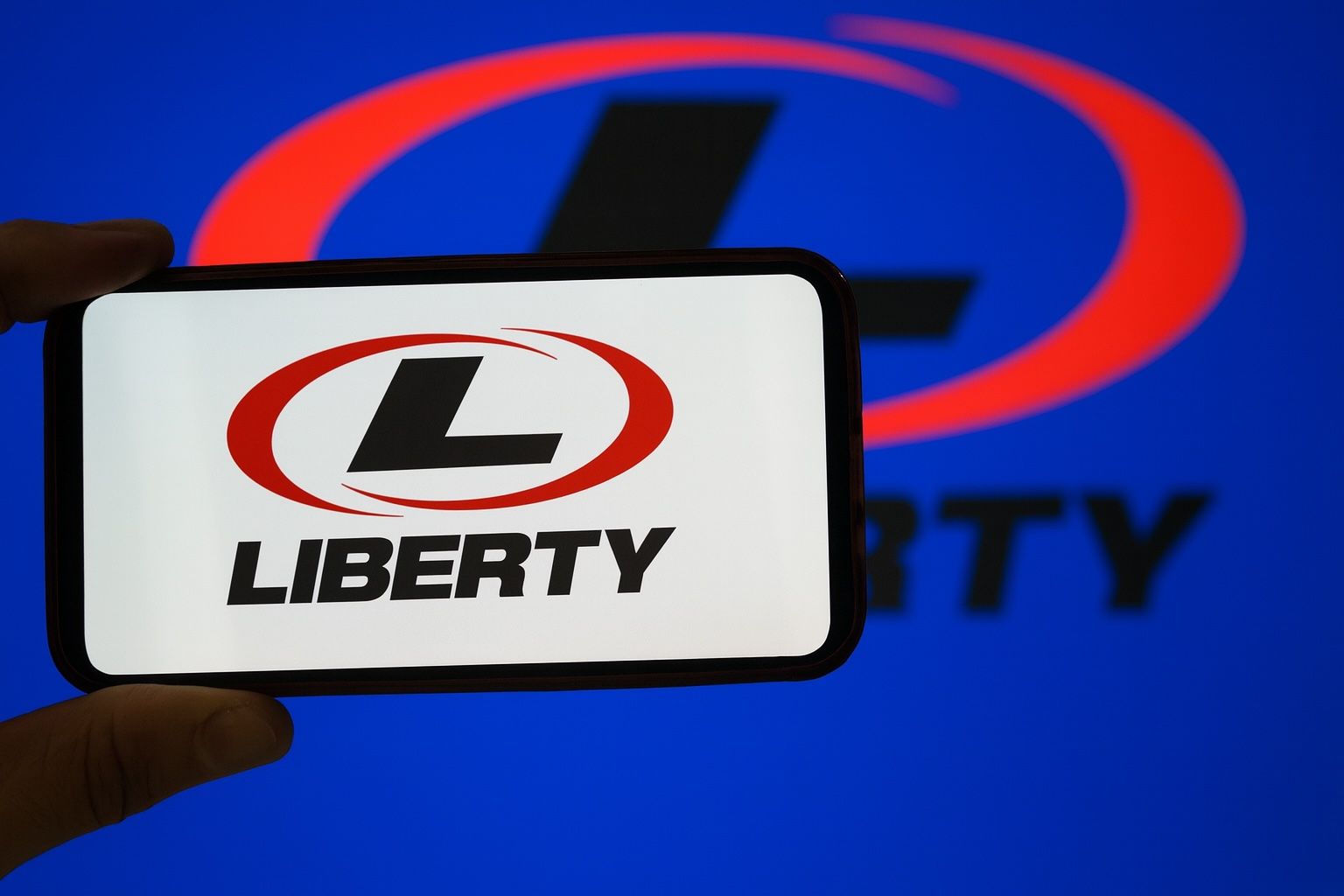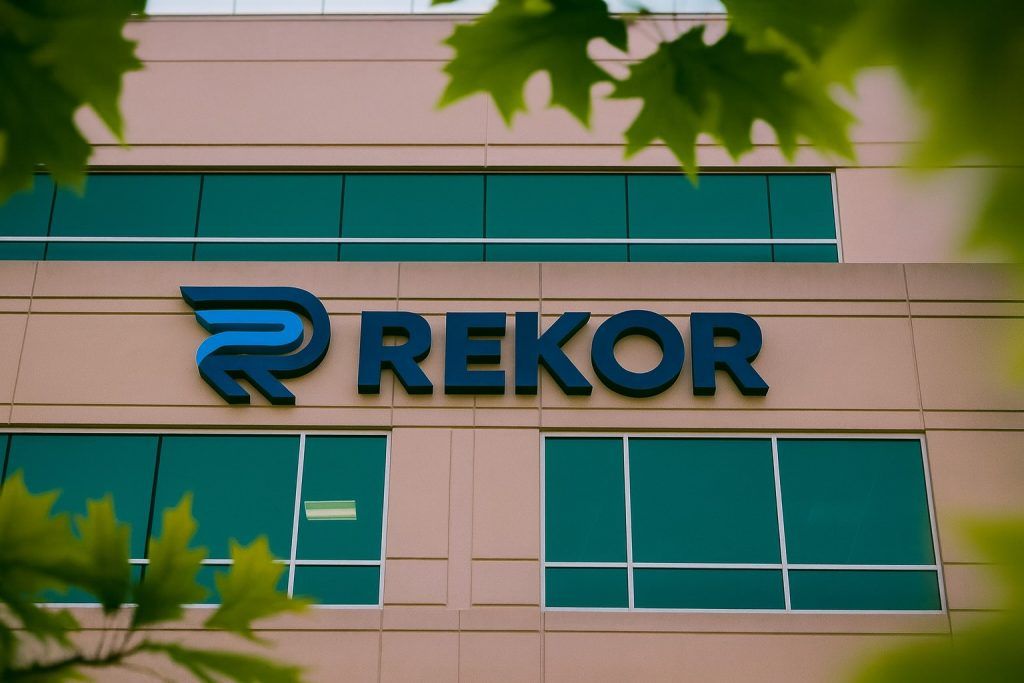- Stock Rebound, Still Down YTD: Liberty Energy Inc. (NYSE: LBRT) shares traded around $12 per share this week, rebounding roughly 15% in October even after a recent 5% weekly dip [1]. Despite this bounce, LBRT remains about 40% lower year-to-date, with a negative one-year total return [2]. (As of Oct. 16, it closed at $11.94, valuing the company near $2.0 billion [3].)
- Mixed Q3 2025 Results: In its Q3 2025 earnings, Liberty reported revenue of $947 million (down 17% year-over-year) and an adjusted net loss of $0.06 per share, missing analyst estimates (which foresaw a slight loss or breakeven) [4]. Paradoxically, GAAP net income came in at $43 million ($0.26 per diluted share), thanks to one-time items, and the quarterly dividend was hiked 13% to $0.09 a share [5] [6] – a signal of management’s confidence.
- Shares Soar on Earnings News: Investors reacted to the earnings with cautious optimism. LBRT stock jumped over 20% intraday on October 17 following the report, indicating renewed interest in the beaten-down stock. Even after this surge, shares trade in the mid-teens, still well below many analyst price targets – which cluster around $13–$15 for the next 12 months [7] – suggesting the market had priced in significant pessimism.
- Oilfield Services Headwinds: Liberty’s results reflect broader struggles in the oilfield services industry. A slowdown in North American drilling and “frac” (hydraulic fracturing) activity, along with pricing pressure on conventional frac fleets, has squeezed revenues and margins across the sector [8] [9]. Global oil prices have been under pressure – Brent crude hovered near $61 and fell ~3% on the week amid oversupply forecasts [10] – dampening upstream spending and E&P (exploration & production) demand, which directly hits service providers like LBRT.
- Strategic Tech & Power Plays: Liberty is pivoting to weather the downturn by investing in technology and power solutions. In Q3 it launched “Forge,” an AI-driven large language model to optimize field operations [11], and touted record operational efficiency (achieving its highest-ever pumping efficiency and safety performance [12]). The company is also expanding into power generation – boosting capacity to over 1 gigawatt by 2027 – aiming to offer reliable on-site power for energy-intensive customers like data centers [13]. These moves diversify Liberty’s revenue streams and play into longer-term trends (rising electricity demand, AI compute power needs) even as its core fracking services face a cyclical lull.
- Analyst Opinions Split: Financial analysts paint a mixed picture for LBRT. ts2.tech notes a popular bull narrative that Liberty is undervalued by roughly 16%, pegging fair value around $14.61 per share based on steady oil demand and Liberty’s tech advantages [14]. In fact, the stock’s recent rally has been partly fueled by bargain hunters subscribing to this view. Wall Street consensus, however, remains cautious: the stock carries mostly “Hold” ratings, with about half of analysts still bullish but others trimming expectations [15]. The median 12-month price target is roughly $13, only modestly above the pre-rally price [16], and one major bank downgraded LBRT to Hold days before earnings, citing near-term challenges [17].
- Market Sentiment and Outlook: Sentiment around Liberty has been volatile. The company’s share price plunged ~41% in the past six months, drastically underperforming the broader energy sector (which rose ~3% in that time) and even lagging other oilfield service peers (the field services index fell ~10% over the period) [18]. This underperformance suggests company-specific strains beyond just macro oil trends [19]. Liberty’s heavy focus on the North American shale patch, for instance, makes it vulnerable to regional slowdowns, whereas more diversified competitors (e.g. those with offshore or international businesses) have been buffered by multi-year contracts and global exposure [20] [21]. On the flip side, Liberty’s aggressive tech adoption and the new power segment have some investors betting on a turnaround when the cycle improves. Management itself acknowledges “market headwinds to persist in the near term” but forecasts that industry fundamentals (frac activity and pricing) should recover by late 2026 as the current oil oversupply wanes [22]. If oil and gas prices stabilize, even a modest uptick in drilling could tighten service capacity and lift pricing power in Liberty’s favor [23].
- Investor Caution vs. Optimism: For now, market sentiment is guarded. By traditional metrics the stock looks cheap – even after the recent bounce, LBRT trades at only around 0.5 times sales, and its enterprise value has fallen to a fraction of what it was during the 2022 oil boom. However, collapsing earnings mean the forward P/E ratio has skyrocketed (from ~31 to over 350 in just a quarter) as profit forecasts evaporated [24]. This illustrates why some experts urge caution. Zacks Investment Research, for example, currently rates Liberty a “Sell”, warning that multiple headwinds (weak margins, pricing pressures, uncertain demand) warrant staying on the sidelines for now [25]. At the same time, value-focused analysts highlight Liberty’s strong balance sheet and innovation, arguing the stock’s drubbing may be overdone if one believes in a medium-term oilpatch recovery [26].
- Bottom Line – Cautious Hope: Liberty Energy’s story as of late 2025 is one of short-term pain, long-term potential. The stock’s recent spike – fueled by an earnings surprise and dividend hike – suggests that investors are willing to reward even glimmers of good news after a brutal year. Yet the company’s fortunes remain tied to the cyclical oilfield services market, which is still working through a downturn. In the coming weeks, analysts expect continued volatility in LBRT: news on oil prices or rig activity could swing sentiment quickly. Looking further out to the coming quarters, the consensus is for a gradual stabilization – with Liberty’s own tech-forward initiatives and cost cuts buffering the slump until industry tailwinds return. For now, Liberty Energy offers a compelling but risky rebound narrative: “undervalued” if one trusts the cycle to turn, but still vulnerable if the oil patch remains in the doldrums [27] [28]. Investors and market watchers will be closely monitoring whether management’s upbeat outlook and strategic bets pay off, or if more turbulence is in store for this once high-flying oilfield services player.
Stock Performance: From Slump to Sudden Surge
[29]Liberty Energy’s stock has seen a dramatic swing in recent weeks. After grinding lower for most of 2025 – at one point down over 40% year-to-date – LBRT caught a bid in October, climbing roughly 15% during the month [30]. The rally accelerated on October 17 when the company’s latest earnings sparked a burst of buying. Intraday, LBRT shares jumped into the mid-$15 range, marking a one-day gain of more than 20%.
Even with that pop, Liberty’s stock is a far cry from where it started the year (above $20). The one-year total return remains negative, reflecting how sharply sentiment had deteriorated prior to this rebound [31]. By comparison, major oilfield service peers like Halliburton and Schlumberger have held up better, buoyed by international operations and more diverse service lines. Liberty’s outsized decline (over 40% plunge in six months [32]) versus a roughly 10% slide for the average oilfield services stock hints at company-specific issues weighing on LBRT. In short, Liberty has lagged its industry, making its October uptick a welcome sight for long-suffering shareholders.
Analysts attribute Liberty’s underperformance to its concentrated exposure to the North American shale market. When U.S. drilling and completion activity pulled back this year, Liberty felt it swiftly. In contrast, globally diversified firms (for example, those servicing offshore projects or multiple regions) enjoyed steadier demand. A Zacks analysis noted that Liberty’s decline appears “isolated,” going beyond broader industry trends [33]. The silver lining is that such a gap can present an opportunity: if Liberty can prove it’s turned a corner operationally, there may be room for its stock to “catch up” to peers. The recent bounce has narrowed that gap slightly, with LBRT now hovering near some analysts’ fair value estimates (mid-teens per share) [34]. But whether this recovery holds will depend on fundamental improvements in the quarters ahead.
Financials and Earnings: Q3’s Bright Spots Amid Losses
[35]Liberty Energy’s third-quarter 2025 financial report was a mixed bag of disappointments and surprises. On the headline numbers, results came in below expectations: revenue of $947 million missed consensus estimates (~$975M) and was down 17% from the same quarter last year [36]. The top-line shortfall reflects reduced demand for Liberty’s fracking services as oil and gas producers curtailed activity. Adjusted earnings painted an even bleaker picture – Liberty posted an adjusted net loss of -$0.06 per share, versus analyst predictions that it would roughly break even [37]. This marked a steep drop from the prior year’s $0.45 per share profit [38], underscoring how swiftly industry conditions have turned.
And yet, within these weak results were positive takeaways that seemed to bolster investor confidence. Notably, Liberty reported a GAAP net profit of $43 million ($0.26 per diluted share) [39], thanks largely to one-time gains and tax benefits. While the adjusted loss better reflects ongoing operations, the surprise profitability on a GAAP basis showed Liberty’s cost controls and efficiencies are kicking in to offset some of the revenue decline. This unexpected profit – the consensus had been for essentially $0 – “significantly surpassed” forecasts [40] and may have helped spark the post-earnings stock rally.
Another shareholder-friendly surprise was Liberty’s announcement of a 13% increase in its quarterly cash dividend, from $0.08 to $0.09 per share [41]. Coming amid a downturn, this dividend hike was an emphatic statement: management is so confident in the company’s financial footing and future prospects that it’s willing to boost payouts even as current earnings sag. “Despite market headwinds, LBRT increased its quarterly cash dividend…demonstrating management’s commitment to shareholder returns and future outlook,” noted one analysis [42]. Income-focused investors welcomed the move, and it puts Liberty’s dividend yield well above industry averages. It’s a bold bet that the company’s cash flows can sustain higher returns to shareholders going forward.
Digging deeper, Liberty’s operational performance in Q3 had bright spots. CEO Ron Gusek highlighted that the team delivered record daily pumping efficiency and safety performance – essentially doing more with less [43]. Adjusted EBITDA (earnings before interest, tax, depreciation, and amortization) came in at $128 million [44]. Though down ~48% year-on-year [45] and below estimates, this still indicates Liberty remained cash-flow positive and managed to protect its margins better than some feared, through aggressive cost cutting and efficient fleet utilization. The company also kept a lid on capital spending (Q3 capex was about $113 million [46]), preserving liquidity. As of Sept. 30, Liberty had $13 million in cash and $146 million in total liquidity available [47] – adequate for near-term needs but something to monitor if the downturn drags on.
In summary, Q3 2025 was tough but not without silver linings. Liberty’s core business clearly felt the squeeze of a slow market, yet the company eked out a small profit on paper, raised its dividend, and demonstrated operational resilience. These factors likely tempered what could have been a harsher market reaction. The earnings “miss” was already largely expected by the time of release (LBRT had been telegraphing challenges), so investors seemed more interested in the signs of stabilization and management’s proactive steps to navigate the slump.
Recent News: Tech Initiatives and Industry Trends
Beyond the raw numbers, Liberty Energy’s recent news cycle offers insight into how the company is positioning for the future – and how the broader oilfield landscape is shifting in late 2025.
One standout development is Liberty’s foray into artificial intelligence and automation. The company unveiled “Forge”, its own large-language AI model, specifically designed for intelligent asset orchestration in well completions [48]. In practice, Forge is integrated with Liberty’s StimCommander platform to optimize hydraulic fracturing operations in real-time using AI. For example, it can automate adjustments to fluid injection rates and pump pressures, improving consistency and cutting response times by 65% according to management [49] [50]. This is part of Liberty’s push to differentiate itself with tech – a bet that smart fracking fleets will attract customers even when commodity prices are soft. Industry experts note that such digital innovations can yield tangible benefits: lower downtime, fuel savings, and better safety, all of which appeal to cost-conscious oil producers in a downturn.
Liberty is also expanding in a somewhat unexpected arena for an oilfield services firm: power generation. The company has been investing in mobile and modular power units (initially to support its own operations and clients’ remote sites) and now sees this as a growth avenue. Liberty announced plans to scale its total power generation capacity to over 1 gigawatt by 2027 [51]. To put that in perspective, 1 GW is roughly the output of a nuclear reactor or a large gas-fired power plant. Liberty’s strategy is to serve “sophisticated electricity consumers” – e.g. large data centers, industrial sites, crypto mining operations – that need reliable, on-site power solutions [52] [53]. With grid reliability becoming an issue in some regions and the rise of energy-hungry computing (AI, cloud, etc.), Liberty is positioning itself as a niche energy provider. The recent alliance with nuclear startup Oklo (announced mid-2025) fits into this narrative, pairing Liberty’s natural gas generators with future micro-nuclear reactors to deliver “zero-carbon” baseload power [54] [55]. These initiatives won’t move the needle on next quarter’s earnings, but they signal how Liberty is diversifying beyond traditional oilfield services.
On the industry-wide front, the past few days brought a mix of concerning and hopeful news for oilfield services. On the concerning side, oil prices have been sliding. Brent crude and WTI are both trading near their lowest levels in months, thanks to a combination of high global supply and easing geopolitical risks. The International Energy Agency (IEA) just forecast a growing oil supply glut into 2026, given robust output (including U.S. production hitting record highs) and only lukewarm demand growth [56]. This outlook has been weighing on sentiment; in fact, oil benchmarks were set for a weekly loss of ~3% as of Oct. 17 [57]. For oilfield service firms like Liberty, lower oil prices usually foreshadow slower drilling activity, as their E&P customers pull back.
However, not all the news is grim. U.S. shale producers have cut back so sharply that some analysts think a bottom is near. Liberty’s CEO noted that frac activity has fallen below the level needed to sustain North America’s oil output [58] – an unsustainable situation long-term. This implies that unless oil demand truly collapses, drilling and completion work will have to pick up again to avoid production declines. Indeed, Liberty expects the current moderation to be “transitory in nature,” anticipating a healthier supply-demand balance for frac services by the second half of 2026 [59]. The rationale: as older equipment is scrapped (due to low utilization) and fewer new rigs are added, capacity tightens, setting the stage for a rebound in pricing and activity when operators inevitably need to boost production [60]. It’s a classic cyclical trough scenario.
In the meantime, industry peers are making moves of their own. Larger rivals like Halliburton and Baker Hughes have been talking up international markets (Middle East, Latin America) which remain active, even as the U.S. slows. Niche competitors in the pressure pumping space are consolidating or idling excess equipment to weather the storm. There’s also an ongoing shift toward lower-carbon services – for example, electrified frac fleets or the kind of power solutions Liberty is pursuing – aligning with customers’ emissions goals. Investor behavior in the sector suggests a flight to quality: companies with strong balance sheets, technological edge, or diverse revenues are being favored, while pure-play frack companies like Liberty had been shunned until this recent uptick. The question is whether Liberty’s latest initiatives can convince investors that it belongs in the former category rather than the latter.
Expert Analysis: Forecasts and Sentiment Going Forward
With Liberty Energy at a crossroads, what do experts say about its stock outlook? The consensus view can best be described as cautiously optimistic – or perhaps optimistic for the long term, cautious for the short term.
On one hand, valuation-focused analysts see considerable upside if Liberty can ride out the current slump. As mentioned, ts2.tech’s analysis (drawing on Simply Wall St data) suggests LBRT’s fair value is around $14.6 – implying the stock was undervalued when it languished near $12 [61]. That narrative banks on Liberty’s fundamental strengths: “persistent demand for oil, gas, and power” in a world that isn’t moving away from hydrocarbons overnight, plus Liberty’s advanced technology leadership and strategic alliances that could secure it a solid share of the market as weaker players fall away [62]. Proponents argue that Liberty’s investments in AI and next-gen equipment will pay dividends as activity rebounds, enabling it to grow profits faster than a generic service provider might in the next up-cycle. In this bullish scenario, today’s stock price could look like a bargain in hindsight.
Wall Street’s official analyst ratings, however, have tempered enthusiasm. According to Refinitiv data, 12 analysts cover LBRT and the majority rate it a “Hold” or equivalent, with a handful of Buys and no Sells at the moment [63]. The median 12-month price target is ~$13, only slightly above where the stock traded post-earnings [64]. In fact, after the recent rally, Liberty is now near the upper end of some target ranges, which suggests limited near-term upside unless analysts revise their forecasts. It’s worth noting that just a few months ago, average price targets were higher (in the mid-to-high teens), but these have come down as 2025 estimates were cut. For instance, Barclays analysts downgraded LBRT to “Hold” in mid-October and slashed their price target from $14 to $12 [65], citing the deteriorating North American fracking outlook. Such moves reflect a cautious stance: the bar has been lowered, and Liberty will have to show tangible improvement (or oil prices will need to rise) for targets to move back up.
Zacks Investment Research currently assigns Liberty a Rank #4 (Sell), highlighting multiple red flags [66]. In a recent report, Zacks pointed to Liberty’s 76% plunge in net income year-over-year (for the first half of 2025) and ongoing pricing pressures as justification for a bearish near-term view [67] [68]. They also noted Liberty’s lack of geographic diversification and heavy reliance on U.S. shale, which could continue to be a drag if domestic producers remain conservative [69]. The bottom-line of that analysis: “Avoid LBRT stock at present.” [70] In other words, better to wait until there are clear signs of a turnaround or until the stock becomes even more of a bargain relative to fundamentals.
That said, even cautious observers acknowledge that Liberty is doing many of the right things to adapt. The company’s decision to increase its dividend in a down cycle was a bold vote of confidence that did not go unnoticed [71]. Also, Liberty has slowed its pace of share buybacks (opting to conserve cash) – a prudent step – but it did repurchase about $24 million worth of shares earlier in 2025 when prices were higher [72]. This suggests management believes the stock is undervalued and wants to support it, but is balancing that against keeping a strong balance sheet. Liberty’s debt remains modest (debt-to-equity ~0.25) and it has liquidity via credit lines, meaning financial stability is not an immediate concern. That removes one risk factor that often plagues small energy services firms in downturns.
Looking ahead to the coming quarters, forecasts hinge on the trajectory of oil and gas activity. If U.S. rig counts start to tick up in 2026 as some predict, Liberty’s earnings could inflect positively. Current consensus earnings estimates for 2025 are very low (around $0.05 EPS for next year according to one source [73]), so any upside surprise in activity or pricing could lead to outsized percentage gains in profit. On the other hand, if the slump deepens or persists longer, Liberty might be facing breakeven results or mild losses for a few more quarters, which would test investor patience.
In the short term (weeks to a couple of months), market sentiment on LBRT will likely sway with each data point – weekly oil inventory reports, OPEC+ decisions, commentary from peer earnings (Schlumberger, Halliburton are due to report soon and will give read-throughs on North America trends). Volatility is expected. The stock’s high beta means it can swing more than the market on any given day. Traders have also noted that after such a sharp decline, LBRT became a target for value-focused buyers and possibly short-covering; the stock’s 25% post-earnings surge hints at some shorts rushing to cover positions. If that technical factor abates, the stock could settle into a range unless fundamental news drives it further.
Longer-term, the outlook improves. Many industry watchers agree that North American shale activity won’t stay depressed indefinitely – it’s more a question of when it rebounds, not if. Liberty’s own forecast of a recovery by late 2026 aligns with views from the likes of the U.S. Energy Information Administration, which expects oil supply and demand to re-balance by 2026, potentially lifting prices. Should that play out, oilfield service pricing power will likely return as demand for frack crews outstrips the slimmed-down supply. Liberty, with its modernized fleet (e.g., fuel-efficient digiPrime™ electric fleets [74]) and enhanced capabilities, could capture a good chunk of that upside while operating more efficiently than before. Some analysts even speculate Liberty could become an acquisition target for a larger player looking to consolidate the shale services market – though no concrete rumors are afoot, and Liberty’s dual-class share structure might complicate a takeover.
In summary, expert sentiment on LBRT is balanced: there’s recognition of the company’s strong positioning and the value proposition after a steep selloff, countered by acknowledgment of real challenges that may not abate immediately. For investors, Liberty Energy represents both an opportunity and a test of conviction. The next few quarters will be crucial to see if Liberty can execute on its strategy – maintaining financial discipline, rolling out new tech and power projects, and holding onto key customers – such that when the tide turns, it will thrive. Until then, the stock is likely to trade on headlines and sentiment. As the saying in energy goes, “the cure for low prices is low prices” – eventually, the cycle turns. Liberty Energy is striving to ensure that when it does, the company is leaner, smarter, and ready to roar back, potentially rewarding those who had the patience to ride out this rough patch.
Sources: Financial data and analysis from Liberty Energy’s Q3 2025 earnings release and conference call; industry context from Reuters and IEA reports; expert commentary from ts2.tech, Zacks, and other financial analysts [75] [76] [77]. All stock price and performance figures are as of October 17, 2025.
References
1. ts2.tech, 2. ts2.tech, 3. www.stocktitan.net, 4. www.tradingview.com, 5. www.edgen.tech, 6. www.edgen.tech, 7. www.tradingview.com, 8. investors.libertyenergy.com, 9. www.edgen.tech, 10. www.reuters.com, 11. www.tradingview.com, 12. www.tradingview.com, 13. www.tradingview.com, 14. simplywall.st, 15. www.tradingview.com, 16. www.tradingview.com, 17. stockanalysis.com, 18. www.nasdaq.com, 19. www.nasdaq.com, 20. www.nasdaq.com, 21. www.nasdaq.com, 22. www.tradingview.com, 23. investors.libertyenergy.com, 24. www.tradingview.com, 25. www.nasdaq.com, 26. simplywall.st, 27. simplywall.st, 28. www.nasdaq.com, 29. ts2.tech, 30. ts2.tech, 31. ts2.tech, 32. www.nasdaq.com, 33. www.nasdaq.com, 34. www.tradingview.com, 35. www.tradingview.com, 36. www.tradingview.com, 37. www.tradingview.com, 38. www.edgen.tech, 39. www.edgen.tech, 40. www.edgen.tech, 41. www.edgen.tech, 42. www.edgen.tech, 43. www.tradingview.com, 44. www.tradingview.com, 45. www.edgen.tech, 46. www.tradingview.com, 47. www.edgen.tech, 48. www.tradingview.com, 49. investors.libertyenergy.com, 50. investors.libertyenergy.com, 51. www.tradingview.com, 52. investors.libertyenergy.com, 53. investors.libertyenergy.com, 54. www.stocktitan.net, 55. www.stocktitan.net, 56. www.reuters.com, 57. www.reuters.com, 58. investors.libertyenergy.com, 59. investors.libertyenergy.com, 60. investors.libertyenergy.com, 61. simplywall.st, 62. simplywall.st, 63. www.tradingview.com, 64. www.tradingview.com, 65. stockanalysis.com, 66. www.nasdaq.com, 67. www.nasdaq.com, 68. www.nasdaq.com, 69. www.nasdaq.com, 70. www.nasdaq.com, 71. www.edgen.tech, 72. www.nasdaq.com, 73. stockanalysis.com, 74. investors.libertyenergy.com, 75. ts2.tech, 76. www.tradingview.com, 77. www.nasdaq.com







